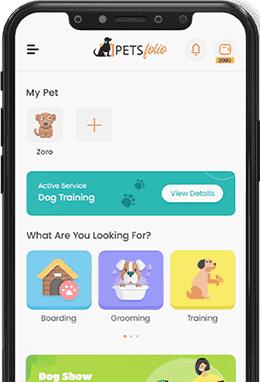Typical Dog Behavior Problems and Expert Solutions
Your dog’s doing zoomies at 3 AM, growling at the mailman, or stealing socks like it’s their job? Welcome to the pack. Dogs, no matter how adorable, come with unique emotional toolkits, and sometimes, those tools are a bit messy. But you’re not alone. From barking fits to destruction sprees, these common dog behavior problems, which range from destructive outbursts to outbursts of barking, are all preventable.

This guide explores the quirks of your dog and shows how to lovingly (and effectively) guide them toward better behavior. Ready to become your dog’s favorite therapist?
1. Excessive Barking: When the Woofs Don’t Stop
- Bark Watch: Dogs can bark due to anxiety, boredom, or excitement. Look for patterns so that you can develop your training plan accordingly..
- Use Commands: Teach “quiet” or “enough” and reward them instantly for silence. Timing is everything.
- Don’t Yell Back: Yelling may excite your dog more. Stay calm, assertive, and focused.
- Mental Stimulation: Dogs bark when bored. Use puzzle toys and brain games.
- Exercise More: More walks = less barking. It burns off energy that fuels noise.
- Limit Triggers: Block views of the street to reduce alert barking.
2. Chewing Everything in Sight
- Provide Alternatives: Offer chew-safe toys. Redirect quickly when they start chewing the wrong thing.
- Puppy Teething: Frozen carrots or puppy-safe chews soothe teething pain.
- Dog-Proof Your Home: Keep shoes, remotes, and cords out of reach.

- Crate Training Helps: Crates reduce destruction and provide a safe space.
- Consistent Correction: Redirect to a toy after saying “no” firmly.
- Flavor Deterrents: Bitter sprays make furniture less tasty. Use with redirection.
3. Jumping on People
- Ignore the Jump: Don’t reward with attention. Wait for calm behavior.
- Train “Sit” as Default: Replace jumping with sitting at greetings.
- Practice with Friends: Train with help from guests.
- Leash-Control Indoors: When there is a high-energy moment inside, the leash will help you have better control.
- Promote Calmness: Reward for calmness when all four of your dog’s feet are on the ground.
- Consistency is Key: In order to give everyone a place, rules have to be enacted.
4. Pulling on the Leash
- Use a Front-Clip Harness: Gently steers without choking.
- Stop and Stand Still: If they pull, stop. No movement = no reward.
- Reward Loose Leash: Use treats when the leash slackens.

- Practice in Short Bursts: Start small, grow the habit.
- Avoid Flexi-Leads: These encourage pulling. Stick to fixed-length leashes.
- Train in Quiet Areas First: Fewer distractions help early training.
Tired of being pulled around by your dog?
Let Petsfolio’s expert trainers transform your daily walks into calm, enjoyable bonding time. Schedule your leash training session now →
5. Separation Anxiety
- Gradual Exits: Begin by leaving your dog alone for a short amount of time to help them feel more comfortable with being separated.
- No Drama Goodbyes: Calm exits reduce stress.
- Create a Safe Zone: Select a calm area, such as a crate.

- Calming Sounds: Music or white noise mimics human presence.
- Exercise Before Leaving: Tired dogs are calmer.
- Use Puzzle Feeders: Mental games reduce separation anxiety.
6. Aggression Toward Strangers or Dogs
- Identify the Trigger: Know the root — fear, trauma, dominance.
- Keep Distance: Avoid stressful interactions.
- Use Positive Reinforcement: Reward calm behavior.
- Avoid Punishment: Stay calm and redirect instead.

- Hire a Trainer: For serious aggression, get professional help.
- Muzzle Conditioning: Make it positive. It’s not punishment.
7. Digging in the Yard
- Create a Dig Zone: Permit one area.
- Bury Toys There: Reinforce with treats and toys.
- More Exercise: Burn energy through walks and games.

- Keep Them Indoors When Bored: Supervise when possible.
- Use Chicken Wire in Gardens: Blocks access to off-limit spots.
- Supervise Outdoor Time: Stop digging as it happens.
Conclusion
Every dog comes with a few quirks — barking, chewing, jumping, or digging. Every challenge presents an opportunity to enhance your relationship and improve as a dog owner. With the right training approach, common dog behavior problems can be turned into lifelong lessons. Need help solving yours?
Need Help with Dog Behavior Problems?
Petsfolio’s expert trainers specialize in solving every tail-wagging issue with skill and compassion. Book your consult today.
Send us a Message
Enjoy this post?
Check out some more great articles and other content.
Dog grooming may seem like a luxury to some people, but for most pet parents, it is e...
Read The ArticleIn today’s world, where people care more about native breeds, sustainability, and h...
Read The ArticleWhen disasters occur, buildings collapse, and chaos arises, a seconds can make a big ...
Read The Article
 Download App
Download App Cart
Cart Support
Support












